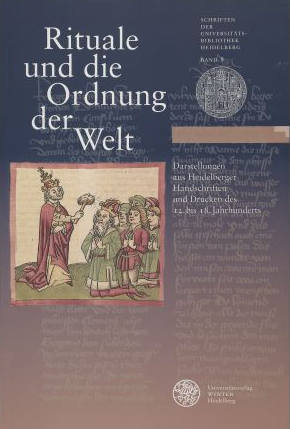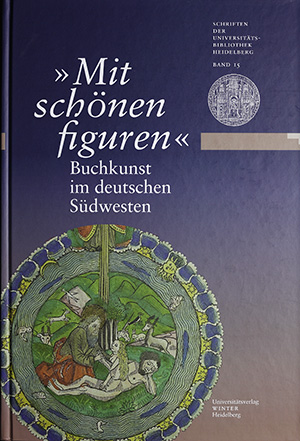Zimmermann, Karin
Löwen, Liebstöckel und Lügensteine: Illustrierte Naturbücher seit Konrad von Megenberg
Konrad von Megenberg is considered a late medieval pioneer of German scientific prose directed at a lay audience. On the occasion of his seven-hundredth birthday, Heidelberg University Library devoted an exhibition to his best-known work, “buch von den natürlichen dingen”, also known as “Buch der Nature” (“book of natural things”or “Book of Nature”), a prototype of illustrated natural history books. The Heidelberg Bibliotheca Palatina comprises as many as four medieval manuscripts of this work. Two of these manuscripts are richly illustrated.
According to the medieval scholastic worldview, Konrad von Mengenberg starts his investigation with humans and the cosmos, before systematically organizing “the natural things” of the three kingdoms of nature – zoology, botany, and geology. In the late Middle Ages the tradition of this work was combined with memorable illustrations. Like the texts, they were based on a long tradition and were themselves widely received until the modern era.
More information and "Virtual exhibition".
Rituale und die Ordnung der Welt: Darstellungen aus Heidelberger Handschriften und Drucken des 12. bis 18. Jahrhunderts
Rituals establish order in this world. This is particularly true for eras such as the Middle Ages and the early modern period, when no written constitutions, codes of law and administrative rules regulated human cohabitation. By being repeatable, symbolically charged acts, rituals did not only illustrate social order and legitimate rule but created authority, priority and hierarchy in the first place. The importance of rituals for European societies of the pre-modern era becomes evident when considering the attention that is paid to them by contemporary writers and artists. This volume is dedicated to the power of the ritual within politics, religion, society and law which is illustrated by the illuminated manuscripts, woodcuts and prints of the 12th to the 18th century from the vaults of Heidelberg University Library.
Die juristischen Handschriften der Codices Palatini Latini in der Vatikanischen Bibliothek (Cod. Pal. lat. 621–813)
This volume presents the Latin legal manuscripts of the Bibliotheca Palatina, most of which are now in the Biblioteca Apostolica Vaticana. This collection has special value due to the manuscripts from Romanic countries it contains, which document the rediscovery and annotation of late antique legal writings and the systematisation of ecclesiastical law collections that shaped Europe from the High Middle Ages onwards. Other codices show close-ups of local practices and interests, for example in the form of codes of procedure, sample forms or personal text collections. The manuscripts cover the 9th to 16th centuries, but have their focus in the 13th to 15th centuries.
"Mit schönen figuren": Buchkunst im deutschen Südwesten
The transition from handwritten to printed books occurred in stages between the middle of the 15th century and around 1500. For over half a century both forms existed side by side. The relationship between the handwritten and the printed book ranged, via changing and reciprocal influences, from pure imitation to competition between the technical and functional means of expression.
The focus of both catalogue and exhibition are artistic book decorations from specific genres: brush painted ornate decorations and borders, figurative pen and ink drawings and overlay miniatures are contrasted with series of wood cuts and printed vignettes.
The exhibition guides visitors through the years 1430 to 1530, using selected examples from the collections of the Württembergian State Library Stuttgart and the University Library Heidelberg. As well as the technical and cultural interplay of this transition phase with relevant examples of the appearance of books, the roles of those commissioning, selling and owning books are also presented. They often significantly influenced the expressive form and content of book decoration as books were also a form of status symbol.






